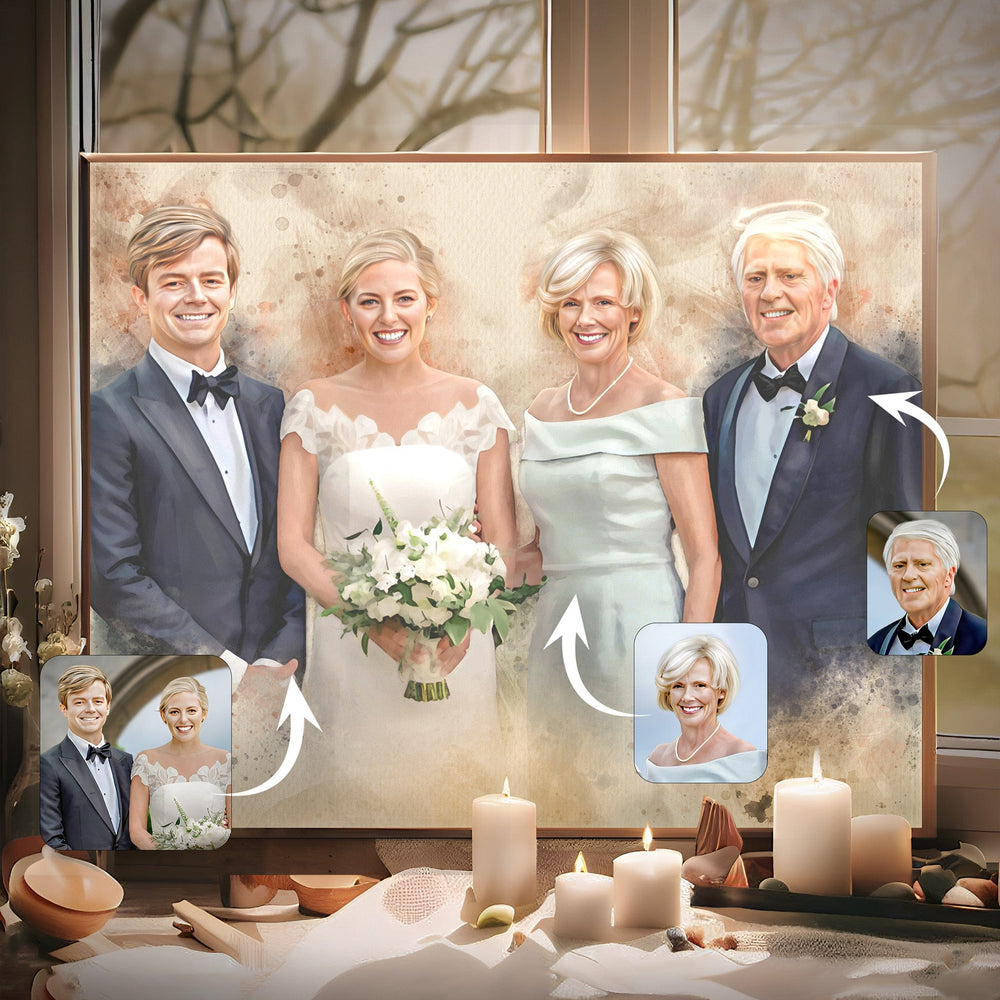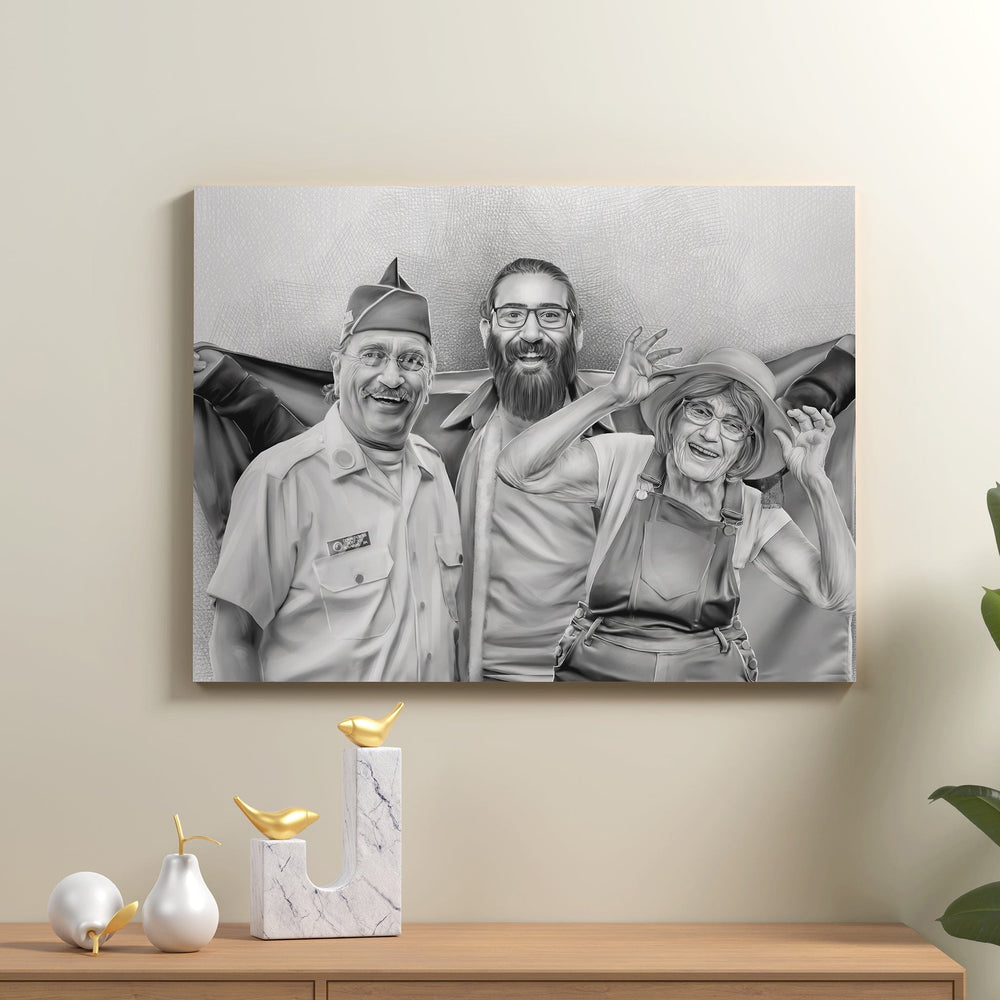5 Famous Paintings That Capture the Western Spirit of the Frontier

Art has always been a powerful medium to convey emotions and ideas. The Western Frontier, with its cowboys, pioneers, Native Americans, and breathtaking Western landscapes, presented artists with a rich tapestry to weave their artistic narratives. These famous Western paintings not only immortalize the past but also inspire a sense of national identity and pride.

Photo by Jaime Reimer from Pexels
Throughout history, American artists such as Charles Marion Russell, known as America's most significant, working-cowboy artist, and Thomas Moran, along with their fellow artists like Charlie Dye, have sought to capture the essence of the American Frontier in their paintings, portraying scenes that evoke the nostalgia, bravery, and hardships of that era. In this article, we will explore five famous paintings that masterfully depict the Western Spirit of the Frontier.
What is Western Painting Style?

Western painting style refers to the artistic traditions and techniques developed by western art painters, including the likes of Charles Russell and Frederic Remington. This style has evolved significantly, influenced by various cultures and artistic movements, including the works of French artists, Dutch artists, and even 19th-century artists.
The use of light and color
Western painting, especially from the Renaissance onwards, has been greatly influenced by Baroque painters, Dutch painters, and German-American painters. Their approach to painting, including dramatic large-scale painting and genre paintings, has significantly shaped the Western painting style.
Chiaroscuro
This is the use of strong contrasts between light and dark to give the illusion of volume in modeling three-dimensional objects and figures. Famous artists like Leonardo da Vinci and Caravaggio employed this technique.
Atmospheric Perspective
Used by artists like Leonardo da Vinci, it involves the use of shades of color and clarity to represent objects that are further away as softer and lighter than objects that are closer.
Impressionism
Originating in the late 19th century, impressionists like Claude Monet and Vincent van Gogh focused on capturing the immediate impression of a scene, often emphasizing the changing qualities of light and color.
The role of animals in Western paintings
Frederic Sackrider Remington and Edward Moran, along with other artists, often incorporated animals in their cowboy action scenes, creating vibrant and dynamic genre scenes that have become iconic in the realm of Western art. In earlier religious art, they often had symbolic meanings. For instance:
- The Lamb: Symbolizing Jesus Christ in Christian art.
- The Dove: Representing the Holy Spirit.
- Lions: Symbolizing courage, majesty, and power.
During the Renaissance and Baroque periods, animals in paintings often served as allegories or were used to show off an artist's skill in rendering lifelike details.
In modern and contemporary art, animals can be symbolic, abstract, or used to critique societal values and behaviors.
Styles of Western paintings

From the Classical approach of 15th-century painting to the more modern expressions of German-American landscape painters, the variety in Western painting styles is immense. This includes the Impressionist movement, where color theorists played with dots of color to create stunning visual effects.
As time passed by, there have been many styles of painting that have developed in the Western world over the centuries:
- Classical: Focused on harmony, proportion, and balanced composition. Ancient Greece and Rome were major proponents.
- Gothic: Emerged in medieval Europe and is characterized by elongated figures and vibrant color.
- Renaissance: Marked a return to classical values, introducing linear perspective, and a focus on realism and humanism.
- Baroque: Dynamic, dramatic, and filled with movement. Notable artists include Peter Paul Rubens and Rembrandt.
- Romanticism: Focused on emotion, nature, and individualism with artists like Francisco Goya and Eugène Delacroix leading the way.
- Impressionism: Moved away from realistic depictions to capture fleeting effects of light and color.
- Post-Impressionism: Included artists like Van Gogh and Paul Cézanne, who emphasized symbolic colors and structural forms.
- Abstract: Departed from traditional representation to focus on shapes, colors, and forms. This includes Cubism, spearheaded by Picasso and Braque.
- Modern and Contemporary: A vast range of styles from Surrealism to Pop Art and beyond, reflecting a diverse range of societal changes, technological advances, and philosophical ideas.
In conclusion, Western painting has a rich and diverse history, with a myriad of styles and techniques that have evolved over time, influenced by cultural, philosophical, and technological changes.

The Impact of Western Paintings
Western painting, spanning from famous painters like C. M. Russell to contemporary commercial artists, has had a profound impact on American life and the history of events in the American Old West.
With its diverse array of styles and subject matters, Western Painting has had a profound impact on the cultural, social, and political landscape across eras. By addressing major historical events, advancing aesthetic values, and challenging societal norms, these art works, some include iconic oil paintings, not only altered the course of art history but also left an indelible mark on human civilization. Let's examine five seminal paintings that embody this impact:
"The Last Supper" by Leonardo da Vinci (1495-1498)
This monumental fresco, depicting the moment Jesus announces one of his disciples will betray him, is an epitome of Renaissance art. Da Vinci's application of linear perspective, meticulous composition, and the emotional depth of the subjects have influenced countless artists. Beyond its artistic significance, "The Last Supper" also evokes deep religious contemplation, making it one of the most recognized and replicated religious paintings of all time.
"The Night Watch" by Rembrandt van Rijn (1642)
Impact: As one of Rembrandt's most ambitious canvases, "The Night Watch" showcases his mastery in using light and shadow (chiaroscuro) to bring dramatic intensity to a group portrait. The painting, depicting a city guard moving out, changed the course of group portraiture by introducing motion, drama, and life, as opposed to static posed arrangements.
"Liberty Leading the People" by Eugène Delacroix (1830)
An emblem of the Romantic era, Delacroix's painting is not just art, but also a political statement. Commemorating the July Revolution of 1830 in France, the painting symbolizes the fight for freedom. The allegorical figure of Liberty leading a diverse group of people captured the spirit of unity and revolution, resonating deeply with contemporary political movements and inspiring future artistic endeavors.
"Les Demoiselles d'Avignon" by Pablo Picasso (1907)
This painting is often hailed as one of the pioneering works of modern art, marking the advent of Cubism. Picasso's radical departure from traditional representation—depicting figures in a fractured, geometric manner—challenged conventional aesthetics and paved the way for the abstract movements of the 20th century. Moreover, the work also generated discussions on colonialism, primitivism, and the representation of the female form.
"Guernica" by Pablo Picasso (1937)
In response to the Nazi bombing of the Basque town of Guernica during the Spanish Civil War, Picasso created this monumental black-and-white mural. A visceral critique of war and violence, the painting's anguished figures, and chaotic composition have made it an enduring symbol of anti-war sentiment. Its universal message against brutality transcends its immediate historical context, making it relevant even in contemporary times.
These paintings, representative of different periods and styles, underscore the power of Western art to reflect, critique, and shape societal attitudes, beliefs, and values.
Things to Know Before Buying a Western Painting
Before buying a western painting, consider factors like authenticity, the artist's background (whether they were a gifted artist or a commercial artist), and the art style. Here are some things to know before buying a western painting:
Authenticity
Verify the painting's authenticity and the credibility of the artist. Research the artist's background and the provenance of the artwork to ensure it is a genuine piece.
Art Style and Preference
Consider your personal taste and the art style of the western painting you desire. Whether you prefer realism, impressionism, or a more contemporary approach, choose a style that resonates with you and complements your home decor.
Condition and Quality
Inspect the painting's condition and quality thoroughly. Look for any damages or signs of wear that could affect its overall appeal and value.
Preserving History and Memories with Memorialize Art

The Western painting style has had a big impact throughout history, capturing the spirit of the frontier and preserving it for a long time. Similarly, Memorialize Art is a great way to create your own special artwork that will be treasured forever. Our collection of ideas inspires you to make something unique and special just for you! With Memorialize Art, it's easy to bring your ideas to life and create something amazing. Whether you want to remember a special memory, honor someone you love, or celebrate an important moment, our platform helps you make a timeless piece of art that will always be meaningful to you.











